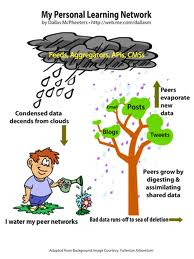Type of E Commerce
B2B (Business-to-Business)
Companies doing business with each other such as manufacturers selling to distributors and wholesalers selling to retailers. Pricing is based on quantity of order and is often negotiable.
B2C (Business-to-Consumer)
Businesses selling to the general public typically through catalogs utilizing shopping cart software. By dollar volume, B2B takes the prize, however B2C is really what the average Joe has in mind with regards to e-commerce as a whole.
C2B (Consumer-to-Business)
A consumer posts his project with a set budget online and within hours companies review the consumer's requirements and bid on the project. The consumer reviews the bids and selects the company that will complete the project. Enlace empowers consumers around the world by providing the meeting ground and platform for such transactions.
C2C (Consumer-to-Consumer)
There are many sites offering free classifieds, auctions, and forums where individuals can buy and sell thanks to online payment systems like PayPal where people can send and receive money online with ease. eBay's auction service is a great example of where person-to-person transactions take place every day since 1995.
E-Banking
The automated delivery of new and traditional banking, products and services directly to customer through electronic, interactive communication channels.
E-Banking Devices
Ø Personal computers (PCs)
Ø Personal digital assistants (PDAs)
Ø Automated teller machines (ATMs)
Ø Kiosks
Ø Touch tone telephones
Ø Cellular and smart phones
For more information about E-Commerce you may go to this link that provided
SECURITY ( ONLINE TRANSACTION)
Secure Electronic Transaction (SET) is a system for ensuring the security of financial transactions on the Internet. It was supported initially by Mastercard, Visa, Microsoft, Netscape, and others. With SET, a user is given an electronic wallet (digital certificate) and a transaction is conducted and verified using a combination of digital certificates and digital signatures among the purchaser, a merchant, and the purchaser's bank in a way that ensures privacy and confidentiality.
How SET works
Ø The customer opens a Mastercard or Visa bank account. Any issuer of a credit card is some kind of bank.
Ø The customer receives a digital certificate. This electronic file functions as a credit card for online purchases or other transactions. It includes a public key with an expiration date. It has been through a digital switch to the bank to ensure its validity.
Ø Third-party merchants also receive certificates from the bank. These certificates include the merchant's public key and the bank's public key.
Ø The customer places an order over a Web page, by phone, or some other means.
Ø The customer's browser receives and confirms from the merchant's certificate that the merchant is valid.
Ø The browser sends the order information. This message is encrypted with the merchant's public key, the payment information, which is encrypted with the bank's public key (which can't be read by the merchant), and information that ensures the payment can only be used with this particular order.
Ø The merchant verifies the customer by checking the digital signature on the customer's certificate. This may be done by referring the certificate to the bank or to a third-party verifier.
Ø The merchant sends the order message along to the bank. This includes the bank's public key, the customer's payment information (which the merchant can't decode), and the merchant's certificate.
Ø The bank verifies the merchant and the message. The bank uses the digital signature on the certificate with the message and verifies the payment part of the message.
Ø The bank digitally signs and sends authorization to the merchant, who can then fill the order.
Methodology:
Ø Aveus helped this leader team plan, design, implement, and digest enterprise change to maximize organization performance while enhancing their employee’s experience with new technology. We:
Ø Assessed the organization’s readiness for technology change, using stakeholder interviews and a review of past technology outcomes and future plans.
Ø Led ideation and mapping sessions to determine the global across-projects impact on employees and their work. A target “employee-customer” experience map was created.
Ø Created a "playbook" of change-readiness and technology management tools to ensure the knowledge gained from this project could be applied to future change efforts.
.jpg)

.jpg)










